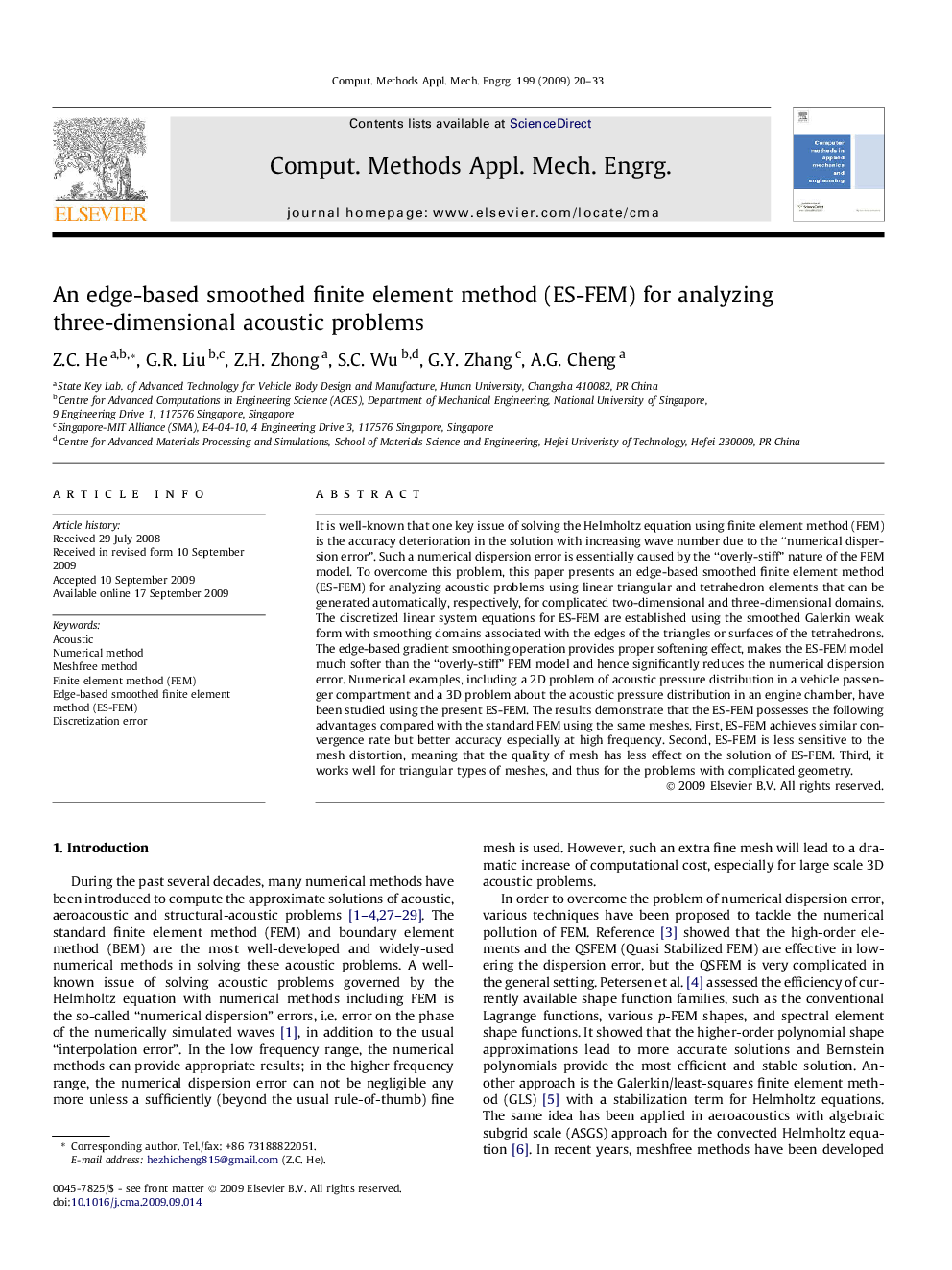| کد مقاله | کد نشریه | سال انتشار | مقاله انگلیسی | نسخه تمام متن |
|---|---|---|---|---|
| 499099 | 863027 | 2009 | 14 صفحه PDF | دانلود رایگان |

It is well-known that one key issue of solving the Helmholtz equation using finite element method (FEM) is the accuracy deterioration in the solution with increasing wave number due to the “numerical dispersion error”. Such a numerical dispersion error is essentially caused by the “overly-stiff” nature of the FEM model. To overcome this problem, this paper presents an edge-based smoothed finite element method (ES-FEM) for analyzing acoustic problems using linear triangular and tetrahedron elements that can be generated automatically, respectively, for complicated two-dimensional and three-dimensional domains. The discretized linear system equations for ES-FEM are established using the smoothed Galerkin weak form with smoothing domains associated with the edges of the triangles or surfaces of the tetrahedrons. The edge-based gradient smoothing operation provides proper softening effect, makes the ES-FEM model much softer than the “overly-stiff” FEM model and hence significantly reduces the numerical dispersion error. Numerical examples, including a 2D problem of acoustic pressure distribution in a vehicle passenger compartment and a 3D problem about the acoustic pressure distribution in an engine chamber, have been studied using the present ES-FEM. The results demonstrate that the ES-FEM possesses the following advantages compared with the standard FEM using the same meshes. First, ES-FEM achieves similar convergence rate but better accuracy especially at high frequency. Second, ES-FEM is less sensitive to the mesh distortion, meaning that the quality of mesh has less effect on the solution of ES-FEM. Third, it works well for triangular types of meshes, and thus for the problems with complicated geometry.
Journal: Computer Methods in Applied Mechanics and Engineering - Volume 199, Issues 1–4, 1 December 2009, Pages 20–33